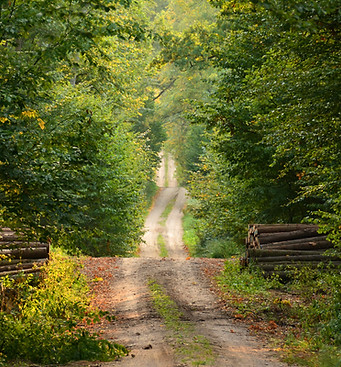
Open Space
As new subdivisions, strip malls, supercenters and commercial office parks sprawl across the country, local officials face the difficult task of balancing the potential economic benefits of growth against the needs of the existing community, including the need for open space.
In this context, "open space" may include small areas within communities or larger tracts on the perimeter. In either case, open space can provide opportunities for sports and recreation, for citizens to escape from the pressures of everyday life, for wildlife to find habitat and refuge, and for plants and soil to assist in the removal of toxins from our environment. Careful management of open space helps ensure that prime farm and ranch lands are protected, flood damage is mitigated, carbon capture is maximized, and clean drinking water supplies are maintained and recharged.


Ulster County, NY, has an Open Space Plan that strives to take a pro-active regional approach to open space preservation, one that embraces scientific, legal, financial and participatory tools to determine where and how the county should grow.
Southold, NY, undertakes preservation efforts through its Town Farmland Program, the Town Open Space Program and the Community Preservation Fund Program. Over 8,800 acres of land have been protected within the town.
Prescott, AZ's website describes major milestones, purchases, donations and land exchanges since the 1980s regarding the city’s natural areas, parklands and open spaces.
Redding, CT, in partnership with the Redding Land Trust and other conservation organizations, and with funding from federal and state governments, has preserved almost 4,000 acres from development.
Harpswell, ME, developed its Open Space Plan to enhance and preserve the natural and scenic qualities of the town’s rural landscape, while allowing future residential growth. It protects land and coastal resources for residents, tourism and the important local fishing industry.
Resources
The Association of New Jersey Environmental Commissions (ANJEC) brings together dozens of municipalities working to preserve their local communities and offers resources on public financing of open space preservation. ANJEC created an informative resource paper in 2021 called Open Space Plan: Charting a course for your town’s green assets.
The Land Trust Alliance is a national nonprofit organization made up of more than 1,000 land trusts that has worked for over 35 years to advocate for the policies and incentives that it takes to save millions of acres every year. A go-to source for training for people who work in conservation.
The Pennsylvania Land Trust Association offers a primer on land conservation issues.
The New York State Open Space Conservation Plan (OSP) is a comprehensive statewide plan that describes current open space conservation goals, actions, tools, resources and programs administered by state and federal agencies and conservation non-profits.
References
[1] Frumkin, H. (2002). Urban Sprawl and Public Health. Public Health Reports, 117(3), 201-217.
[2] Chiesura, A. (2004). The role of urban parks for the sustainable city. Landscape and Urban Planning, 68(1), 129-138.
[3] Wolch, J. R., et al. (2014). Urban green space, public health, and environmental justice: The challenge of making cities ‘just green enough’. Landscape and Urban Planning, 125, 234-244.
[4] Barthel, S., et al. (2013). Food and Green Space in Cities: A Resilience Lens on Gardens and Urban Environmental Movements. Urban Studies, 52(7), 1321-1338.
